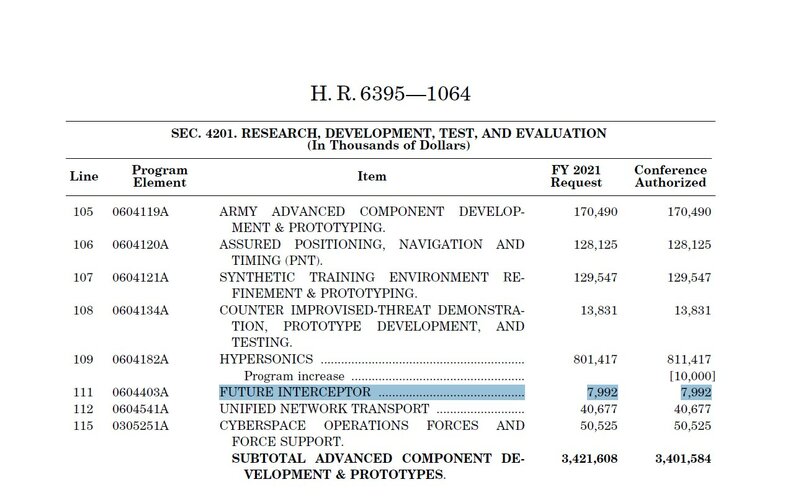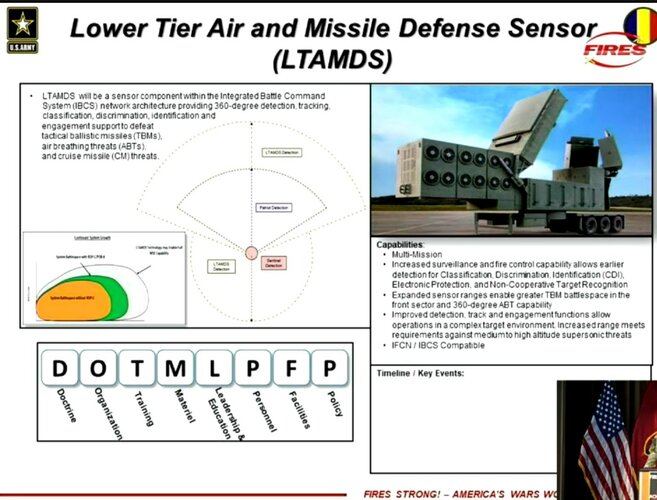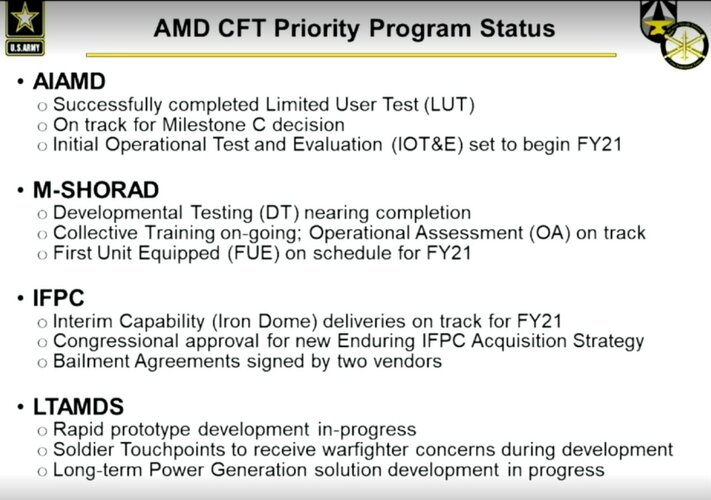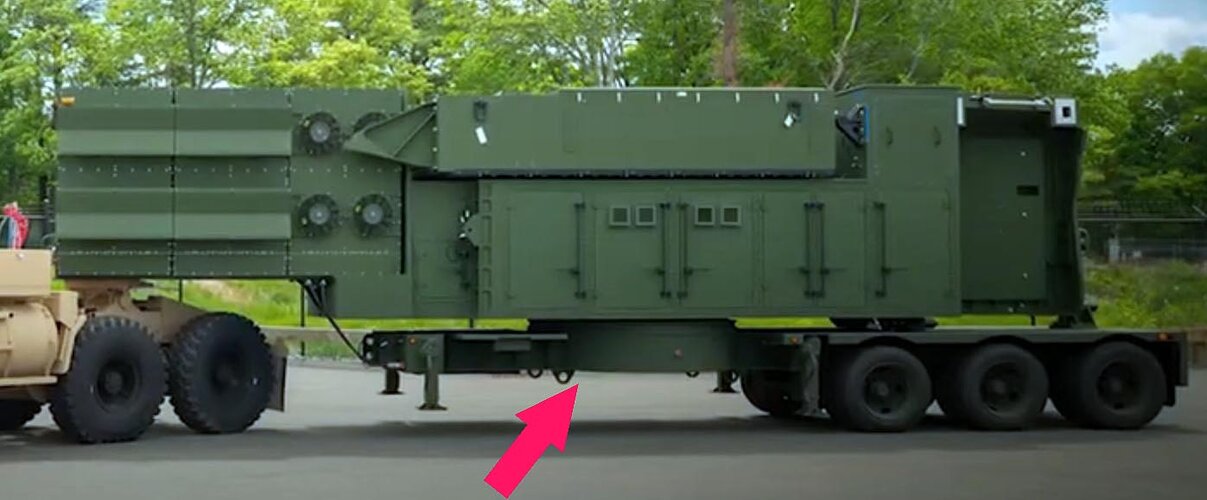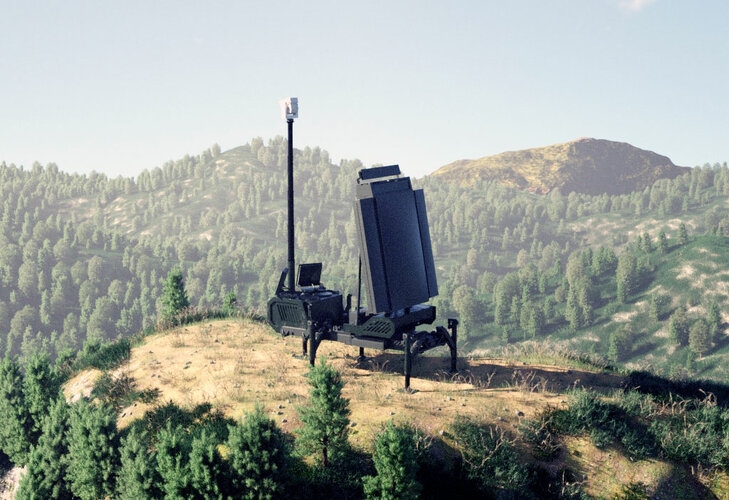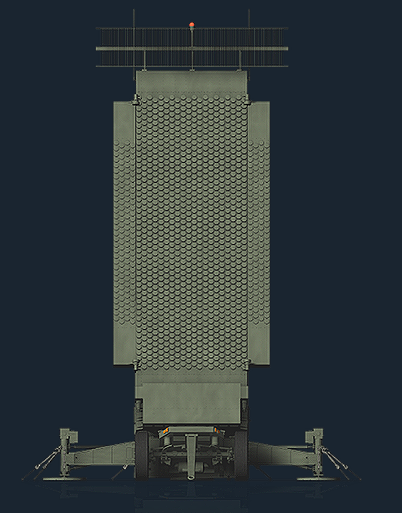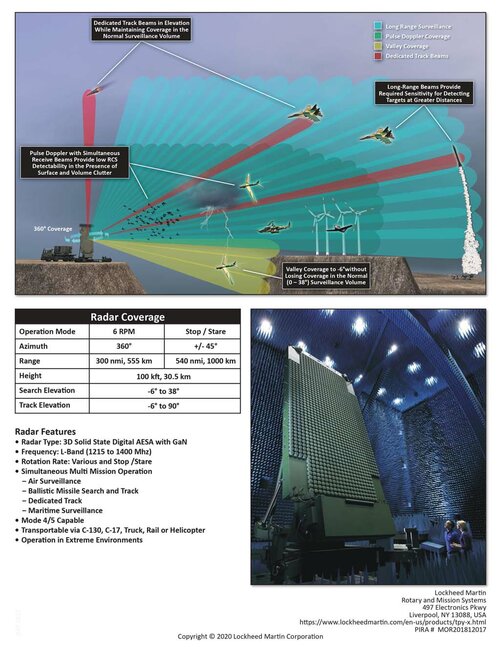You are using an out of date browser. It may not display this or other websites correctly.
You should upgrade or use an alternative browser.
You should upgrade or use an alternative browser.
Patriot SAM replacement
bring_it_on
I really should change my personal text
- Joined
- 4 July 2013
- Messages
- 3,636
- Reaction score
- 3,747
LTFI?
The Lower Tier Future Interceptor which is in the Army FYDP though still in early definition phase atm.
bring_it_on
I really should change my personal text
- Joined
- 4 July 2013
- Messages
- 3,636
- Reaction score
- 3,747
Attachments
Rumor has it that HAC-D zeroed out LTFI in the budget on the Hill and its fate awaits SAC-D. Sounds like it is probably toast. PAC-3 upgrade is the way to go.LTFI?
The Lower Tier Future Interceptor which is in the Army FYDP though still in early definition phase atm.
bring_it_on
I really should change my personal text
- Joined
- 4 July 2013
- Messages
- 3,636
- Reaction score
- 3,747
Rumor has it that HAC-D zeroed out LTFI in the budget on the Hill and its fate awaits SAC-D. Sounds like it is probably toast. PAC-3 upgrade is the way to go.LTFI?
The Lower Tier Future Interceptor which is in the Army FYDP though still in early definition phase atm.
Well of course, if the PAC-3 can deal with all the existing and future threats 2-5 decades out then that's fine. But at some point, I'm pretty sure you would tap out in terms of its capability against the higher end hypersonic threats. Not sure the reason behind why HAC-D may have not liked it. Perhaps it was the slow acquisition approach. But I doubt they would point to the technical sufficiency of the PAC-3 for all future LT threats as the reason. So while they may have not taken a liking to what the Army was putting forward, it doesn't rule out a future lower tier interceptor for the Army. Unless of course the threat takes a very long holiday. The Army is slow enough as it is I don't think we need H/SAC-D slowing things down on top of that. Just my 2 cents.
Last edited:
- Joined
- 3 June 2011
- Messages
- 18,295
- Reaction score
- 12,112
PAC-3 is a short range missile.Rumor has it that HAC-D zeroed out LTFI in the budget on the Hill and its fate awaits SAC-D. Sounds like it is probably toast. PAC-3 upgrade is the way to go.LTFI?
The Lower Tier Future Interceptor which is in the Army FYDP though still in early definition phase atm.
Well of course, if the PAC-3 can deal with all the existing and future threats 2-5 decades out then that's fine. But at some point, I'm pretty sure you would tap out in terms of its capability against the higher end hypersonic threats. Not sure the reason behind why HAC-D may have not liked it. Perhaps it was the slow acquisition approach. But I doubt they would point to the technical sufficiency of the PAC-3 for all future LT threats as the reason. So while they may have not taken a liking to what the Army was putting forward, it doesn't rule out a future lower tier interceptor for the Army. Unless of course the threat takes a very long holiday. The Army is slow enough as it is I don't think we need H/SAC-D slowing things down on top of that. Just my 2 cents.
bring_it_on
I really should change my personal text
- Joined
- 4 July 2013
- Messages
- 3,636
- Reaction score
- 3,747
PAC-3 is a short range missile.Rumor has it that HAC-D zeroed out LTFI in the budget on the Hill and its fate awaits SAC-D. Sounds like it is probably toast. PAC-3 upgrade is the way to go.LTFI?
The Lower Tier Future Interceptor which is in the Army FYDP though still in early definition phase atm.
Well of course, if the PAC-3 can deal with all the existing and future threats 2-5 decades out then that's fine. But at some point, I'm pretty sure you would tap out in terms of its capability against the higher end hypersonic threats. Not sure the reason behind why HAC-D may have not liked it. Perhaps it was the slow acquisition approach. But I doubt they would point to the technical sufficiency of the PAC-3 for all future LT threats as the reason. So while they may have not taken a liking to what the Army was putting forward, it doesn't rule out a future lower tier interceptor for the Army. Unless of course the threat takes a very long holiday. The Army is slow enough as it is I don't think we need H/SAC-D slowing things down on top of that. Just my 2 cents.
Exactly, and with IBCS and LTAMDS you have the ability to engage some of these threats much farther out. No longer limited by the legacy PATRIOT systems.
- Joined
- 3 June 2011
- Messages
- 18,295
- Reaction score
- 12,112
How do you figure? Neither increases the range of the missile.PAC-3 is a short range missile.Rumor has it that HAC-D zeroed out LTFI in the budget on the Hill and its fate awaits SAC-D. Sounds like it is probably toast. PAC-3 upgrade is the way to go.LTFI?
The Lower Tier Future Interceptor which is in the Army FYDP though still in early definition phase atm.
Well of course, if the PAC-3 can deal with all the existing and future threats 2-5 decades out then that's fine. But at some point, I'm pretty sure you would tap out in terms of its capability against the higher end hypersonic threats. Not sure the reason behind why HAC-D may have not liked it. Perhaps it was the slow acquisition approach. But I doubt they would point to the technical sufficiency of the PAC-3 for all future LT threats as the reason. So while they may have not taken a liking to what the Army was putting forward, it doesn't rule out a future lower tier interceptor for the Army. Unless of course the threat takes a very long holiday. The Army is slow enough as it is I don't think we need H/SAC-D slowing things down on top of that. Just my 2 cents.
Exactly, and with IBCS and LTAMDS you have the ability to engage some of these threats much farther out. No longer limited by the legacy PATRIOT systems.
bring_it_on
I really should change my personal text
- Joined
- 4 July 2013
- Messages
- 3,636
- Reaction score
- 3,747
How do you figure? Neither increases the range of the missile.PAC-3 is a short range missile.Rumor has it that HAC-D zeroed out LTFI in the budget on the Hill and its fate awaits SAC-D. Sounds like it is probably toast. PAC-3 upgrade is the way to go.LTFI?
The Lower Tier Future Interceptor which is in the Army FYDP though still in early definition phase atm.
Well of course, if the PAC-3 can deal with all the existing and future threats 2-5 decades out then that's fine. But at some point, I'm pretty sure you would tap out in terms of its capability against the higher end hypersonic threats. Not sure the reason behind why HAC-D may have not liked it. Perhaps it was the slow acquisition approach. But I doubt they would point to the technical sufficiency of the PAC-3 for all future LT threats as the reason. So while they may have not taken a liking to what the Army was putting forward, it doesn't rule out a future lower tier interceptor for the Army. Unless of course the threat takes a very long holiday. The Army is slow enough as it is I don't think we need H/SAC-D slowing things down on top of that. Just my 2 cents.
Exactly, and with IBCS and LTAMDS you have the ability to engage some of these threats much farther out. No longer limited by the legacy PATRIOT systems.
I meant that these systems now open the door for longer ranged BMD interceptors to come in as the new sensor and the networking can now support extended range TBM intercepts. On the MSE, I think the Army maintains that LTAMDS enables the full capability of the MSE whereas legacy radar couldn't. Similarly, with the AF and Army now working very closely on C-JADC2, this is also the right time to think about perhaps using Army systems for the air-superiority mission and fielding longer ranged interceptors for the non TBM or hypersonic weapon threats.
I would bet the $ is restored. Pretty early stages and doesn't require a ton of $ to keep it going. Likely have to wait until after Nov 3 to find out though.How do you figure? Neither increases the range of the missile.PAC-3 is a short range missile.Rumor has it that HAC-D zeroed out LTFI in the budget on the Hill and its fate awaits SAC-D. Sounds like it is probably toast. PAC-3 upgrade is the way to go.LTFI?
The Lower Tier Future Interceptor which is in the Army FYDP though still in early definition phase atm.
Well of course, if the PAC-3 can deal with all the existing and future threats 2-5 decades out then that's fine. But at some point, I'm pretty sure you would tap out in terms of its capability against the higher end hypersonic threats. Not sure the reason behind why HAC-D may have not liked it. Perhaps it was the slow acquisition approach. But I doubt they would point to the technical sufficiency of the PAC-3 for all future LT threats as the reason. So while they may have not taken a liking to what the Army was putting forward, it doesn't rule out a future lower tier interceptor for the Army. Unless of course the threat takes a very long holiday. The Army is slow enough as it is I don't think we need H/SAC-D slowing things down on top of that. Just my 2 cents.
Exactly, and with IBCS and LTAMDS you have the ability to engage some of these threats much farther out. No longer limited by the legacy PATRIOT systems.
I meant that these systems now open the door for longer ranged BMD interceptors to come in as the new sensor and the networking can now support extended range TBM intercepts. On the MSE, I think the Army maintains that LTAMDS enables the full capability of the MSE whereas legacy radar couldn't. Similarly, with the AF and Army now working very closely on C-JADC2, this is also the right time to think about perhaps using Army systems for the air-superiority mission and fielding longer ranged interceptors for the non TBM or hypersonic weapon threats.
- Joined
- 21 April 2009
- Messages
- 13,725
- Reaction score
- 7,606
Bolstered by $1B U.S. investment, Israel’s David’s Sling knocks down cruise missile target in ‘milestone’ event
Israel and prime contractor Rafael yesterday completed a successful test of the country’s billion-dollar, U.S. government-subsidized short-range missile defense system against a cruise missilebring_it_on
I really should change my personal text
- Joined
- 4 July 2013
- Messages
- 3,636
- Reaction score
- 3,747
bring_it_on
I really should change my personal text
- Joined
- 4 July 2013
- Messages
- 3,636
- Reaction score
- 3,747
Boeing Starts Working On New Seeker For PAC-3 | Aviation Week Network
The new development program is part a series of contracts awarded in the past year worth a total of $974 million to continue and expand production of the radar seekers for PAC-3.
Conspirator
CLEARANCE: L5
- Joined
- 14 January 2021
- Messages
- 324
- Reaction score
- 228
some missiles on say....... and arlegh burke class destroyer have better SAM capabilities than the patriot. so just convert some of them.
- Joined
- 3 June 2011
- Messages
- 18,295
- Reaction score
- 12,112
Which one is designed to be beat to hell while being hauled over terrain?some missiles on say....... and arlegh burke class destroyer have better SAM capabilities than the patriot. so just convert some of them.
Conspirator
CLEARANCE: L5
- Joined
- 14 January 2021
- Messages
- 324
- Reaction score
- 228
Conspirator
CLEARANCE: L5
- Joined
- 14 January 2021
- Messages
- 324
- Reaction score
- 228
no but still you could do it right and convert themWhich one is designed to be beat to hell while being hauled over terrain?some missiles on say....... and arlegh burke class destroyer have better SAM capabilities than the patriot. so just convert some of them.
View attachment 648625
- Joined
- 3 June 2011
- Messages
- 18,295
- Reaction score
- 12,112
Maybe. But don't you wonder why land-based Aegis still has it's missiles in a climate controlled VLS instead of sticking them on cheaper trailers?no but still you could do it right and convert themWhich one is designed to be beat to hell while being hauled over terrain?some missiles on say....... and arlegh burke class destroyer have better SAM capabilities than the patriot. so just convert some of them.
View attachment 648625
Conspirator
CLEARANCE: L5
- Joined
- 14 January 2021
- Messages
- 324
- Reaction score
- 228
you could cure them before installing the warheads meybe?Maybe. But don't you wonder why land-based Aegis still has it's missiles in a climate controlled VLS instead of sticking them on cheaper trailers?no but still you could do it right and convert themWhich one is designed to be beat to hell while being hauled over terrain?some missiles on say....... and arlegh burke class destroyer have better SAM capabilities than the patriot. so just convert some of them.
View attachment 648625
bring_it_on
I really should change my personal text
- Joined
- 4 July 2013
- Messages
- 3,636
- Reaction score
- 3,747
some missiles on say....... and arlegh burke class destroyer have better SAM capabilities than the patriot. so just convert some of them.
Actually they really don't. PAC-3 and PAC-3 MSE provide great payload and magazine flexibility while being able to defeat a fair chunk of the threat. In fact we need LTAMDS to actually replace the legacy radars before the MSE's full envelope can be leveraged against the TBM threat. I suppose the Navy's equivalent for the high magazine loadout would be the ESSM which even in its block II configuration is far less capable (though cheaper).
THAAD covers the upper tier threat and they are looking at expanding its envelope and battle area as well while also providing a new interceptor to PATRIOT that covers threats at longer range, higher altitudes and at faster speeds than what the MSE can currently handle.
Conspirator
CLEARANCE: L5
- Joined
- 14 January 2021
- Messages
- 324
- Reaction score
- 228
i seesome missiles on say....... and arlegh burke class destroyer have better SAM capabilities than the patriot. so just convert some of them.
Actually they really don't. PAC-3 and PAC-3 MSE provide great payload and magazine flexibility while being able to defeat a fair chunk of the threat. In fact we need LTAMDS to actually replace the legacy radars before the MSE's full envelope can be leveraged against the TBM threat. I suppose the Navy's equivalent for the high magazine loadout would be the ESSM which even in its block II configuration is far less capable (though cheaper).
THAAD covers the upper tier threat and they are looking at expanding its envelope and battle area as well while also providing a new interceptor to PATRIOT that covers threats at longer range, higher altitudes and at faster speeds than what the MSE can currently handle.
bring_it_on
I really should change my personal text
- Joined
- 4 July 2013
- Messages
- 3,636
- Reaction score
- 3,747

IBCS Achieves Successful Milestone C Decision
HUNTSVILLE, Ala. – Jan. 14, 2021 – Northrop Grumman Corporation’s (NYSE: NOC) Integrated Air and Missile Defense Battle Command System (IBCS), developed in partnership with the U.S. Army, has received authorization to proceed with low rate initial...
bring_it_on
I really should change my personal text
- Joined
- 4 July 2013
- Messages
- 3,636
- Reaction score
- 3,747
bring_it_on
I really should change my personal text
- Joined
- 4 July 2013
- Messages
- 3,636
- Reaction score
- 3,747
If the slide is to scale It seems that the rear panels on LTAMDS are good for about 70% the performance (detection range) of the current PATRIOT primary array. This is less important with IBCS, IFCN and the improved Sentinel A4 etc but still good to have 360 degree coverage particularly against the low flying threat. It also gives plenty of options to operate stand-alone LTAMDS for surveillance or as part of a lighter footprint than moving an entire AD battalion into a particular theater.
bring_it_on
I really should change my personal text
- Joined
- 4 July 2013
- Messages
- 3,636
- Reaction score
- 3,747
jsport
what do you know about surfing Major? you're from-
- Joined
- 27 July 2011
- Messages
- 7,711
- Reaction score
- 5,713

Israelis Push New Missile For Patriot Launchers: SkyCeptor - Breaking Defense
Patriot missiles are expensive. Rafael and its US partner Raytheon say they can fire the cheaper Israeli SkyCeptor from existing Patriot launchers. Will that tempt the US Army?
Still not sure I like that layout. Without mechanical scanning and only three ESA arrays there will be three areas of diminished to the level of useless performance. So it should be either four arrays or mech scanned in azimuth in addition to ESA. Why exactly this particular layout was considered optimal?..
- Joined
- 18 May 2019
- Messages
- 640
- Reaction score
- 1,672
for example the main antenna receives targets designation from high-level sensors, like AN/TPY-2, SpeedDealer, F-35, satellites etcStill not sure I like that layout. Without mechanical scanning and only three ESA arrays there will be three areas of diminished to the level of useless performance. So it should be either four arrays or mech scanned in azimuth in addition to ESA. Why exactly this particular layout was considered optimal?..
Last edited:
Yeah, but with that target being 50+ degrees off axis it won't help much if no mechanical movement of antenna is present.for example the main antenna receives targets designation from high-level sensors, like AN/TPY-2, SpeedDealer, F-35, satellites etcStill not sure I like that layout. Without mechanical scanning and only three ESA arrays there will be three areas of diminished to the level of useless performance. So it should be either four arrays or mech scanned in azimuth in addition to ESA. Why exactly this particular layout was considered optimal?..
- Joined
- 18 May 2019
- Messages
- 640
- Reaction score
- 1,672
bring_it_on
I really should change my personal text
- Joined
- 4 July 2013
- Messages
- 3,636
- Reaction score
- 3,747
These are networked air defense systems with IBCS-IFCN that will link across the entire PATRIOT battalion, possibly THAAD, and of course Sentinel A3's and A4's that will be stand-alone or part of IFPC systems.
Yeah, but as I understand it isn't used for common scanning but for positioning during setup. Otherwise additional arrays look even stranger.I think, bearing is located here
View attachment 652131
bring_it_on
I really should change my personal text
- Joined
- 4 July 2013
- Messages
- 3,636
- Reaction score
- 3,747
Three ESAs would have been sufficiently to meet the US Army requirements of wanting a said defended area against TBM threats in the forward sector, and coverage in the rear for non TBM threats. If you look at what the Israeli-Lockheed partnership proposed, they too were using three arrays but with much smaller antennas. I think what is being missed here is the capability that the Army gets with the Sentinel A4. It is a significant boost over the A3, and is going to be a key part of the PATRIOT formations (the Sentinel is already deployed with PATRIOT units in the Middle East even now). So you are getting a fair bit of target quality data coming in via a 360 degree rotator. The rear LTAMDS arrays only extend that in terms of range because they are larger.
Attachments
bring_it_on
I really should change my personal text
- Joined
- 4 July 2013
- Messages
- 3,636
- Reaction score
- 3,747
Looks like the TPY-X this time around.
Lockheed Martin Rotary and Mission Systems, Liverpool, New York, has been awarded an $8,429,948 cost-plus-fixed-fee integration contract for the Three-Dimensional Expeditionary Long-Range Radar Rapid Prototyping Program. This contract provides for the development of an interface to the U.S. Air Force Control and Reporting Center’s AN/TYQ-23A. Work will be performed in Liverpool, New York, and is expected to be completed by March 23, 2023. Fiscal 2020 research, development, test, and evaluation funds in the full amount are being obligated at the time of award. This contract also includes options for production and fielding of 35 radars. Air Force Life Cycle Management Center, Hanscom Air Force Base, Massachusetts, is the contracting activity (FA8730-21-C-0022).

Contracts for March 26, 2021
Today's Defense Department contracts valued at $7.5 million or more are now live on Defense.gov.www.defense.gov
Attachments
Last edited:
- Joined
- 18 May 2019
- Messages
- 640
- Reaction score
- 1,672
Two tests aimed at integrating Patriot and THAAD missile systems conducted by the U.S. Missile Defense Agency last year, have failed.
In a report published earlier this week, the U.S. Government Accountability Office (GAO) said the Army carried out two out of a planned nine flight tests in the fiscal year 2020 designed to make the Patriot system launch an interceptor using a THAAD AN/TPY-2 radar. The remaining tests were postponed due to the COVID-19 pandemic.
In the first test, named FTX-39, the primary objective was a simulated PAC-3 MSE intercept of a threat representative short-range ballistic missile (SRBM) target utilizing Patriot Launch-on-Remote (THAAD). However, the range safety team terminated the Army-supplied Black Dagger target after a software error caused it to drift outside of acceptable flight safety boundaries. The termination occurred prior to the THAAD AN/TPY-2 radar acquiring the target. Consequently, THAAD and Patriot did not collect data on the target. MDA declared this a no-test, the GAO report said.
In the second test, named FTP-27 E2, the primary objective was a live intercept of a threat representative SRBM target with two PAC-3 interceptors utilizing Patriot Launch-on-Remote (THAAD). The interceptors failed and a subsequent Army failure review board found the root cause was that the compact disk used to update the two interceptors was missing a portion of the necessary software. According to MDA, the test still successfully demonstrated the Patriot Launch-on-Remote (THAAD) capability despite the failed intercept. Specifically, MDA officials noted that Patriot received the remote track data from THAAD’s AN/TPY-2 radar, developed a firing solution, launched its interceptors, detected and correlated with the remote track, and provided guidance uplinks. Director, Operational Test and Evaluation (DOT&E) concurred that the test demonstrated this capability, while BMDS OTA officials stated the significance of the test failure was low with regard to the operational force and future of Patriot Launch-on-Remote (THAAD).
In a report published earlier this week, the U.S. Government Accountability Office (GAO) said the Army carried out two out of a planned nine flight tests in the fiscal year 2020 designed to make the Patriot system launch an interceptor using a THAAD AN/TPY-2 radar. The remaining tests were postponed due to the COVID-19 pandemic.
In the first test, named FTX-39, the primary objective was a simulated PAC-3 MSE intercept of a threat representative short-range ballistic missile (SRBM) target utilizing Patriot Launch-on-Remote (THAAD). However, the range safety team terminated the Army-supplied Black Dagger target after a software error caused it to drift outside of acceptable flight safety boundaries. The termination occurred prior to the THAAD AN/TPY-2 radar acquiring the target. Consequently, THAAD and Patriot did not collect data on the target. MDA declared this a no-test, the GAO report said.
In the second test, named FTP-27 E2, the primary objective was a live intercept of a threat representative SRBM target with two PAC-3 interceptors utilizing Patriot Launch-on-Remote (THAAD). The interceptors failed and a subsequent Army failure review board found the root cause was that the compact disk used to update the two interceptors was missing a portion of the necessary software. According to MDA, the test still successfully demonstrated the Patriot Launch-on-Remote (THAAD) capability despite the failed intercept. Specifically, MDA officials noted that Patriot received the remote track data from THAAD’s AN/TPY-2 radar, developed a firing solution, launched its interceptors, detected and correlated with the remote track, and provided guidance uplinks. Director, Operational Test and Evaluation (DOT&E) concurred that the test demonstrated this capability, while BMDS OTA officials stated the significance of the test failure was low with regard to the operational force and future of Patriot Launch-on-Remote (THAAD).
- Joined
- 21 April 2009
- Messages
- 13,725
- Reaction score
- 7,606
Army Revamps to Pursue New Air-and-Missile Defense Tech
Army Revamps to Pursue New Air-and-Missile Defense Tech
aonestudio
I really should change my personal text
- Joined
- 11 March 2018
- Messages
- 2,961
- Reaction score
- 7,471
The thing with hypersonic threats is that, well, the plasma sheath which will 'lolnope' anything not a UV Pulse Laser. The only way you can use more conventional methods to defeat such missiles is, essentially, pre-hypersonic (which is mostly the launch phase) phase only.
aonestudio
I really should change my personal text
- Joined
- 11 March 2018
- Messages
- 2,961
- Reaction score
- 7,471
View: https://twitter.com/USArmy/status/1421230629778345987

 www.armyrecognition.com
www.armyrecognition.com

US Army has launched Patriot PAC-3 CRI missile during IBCS flight test
google_ad_client = "pub-4068738923530102"; /* 468x15 data sheet menu top dark green */ google_ad_slot = "3500417247"; google_ad_width = 468; go
Army air defense leader: Patriot, Stinger 'need to go' | InsideDefense.com
The Army needs to prepare to "ruthlessly" retire the Patriot and Stinger air defense systems, according to a senior service official who said wholesale replacement of the Cold War systems is needed to modernize the air defense force for emerging threats.
Similar threads
-
-
FABMS and early versions of SAM D
- Started by uk 75
- Replies: 20
-
Halcon - Argentina's Roland SAM replacement
- Started by batigol
- Replies: 0
-
Thales Lightweight Multirole Missile
- Started by Mercurius Cantabrigiensis
- Replies: 37
-
60s Point Defence Missiles: Mauler and the UK PT 428
- Started by uk 75
- Replies: 4


